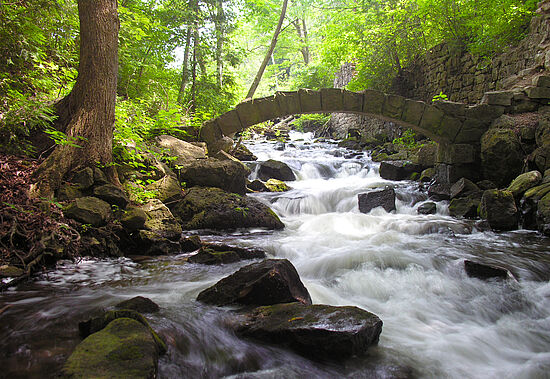This week, May 3-9, is Emergency Preparedness Week and it provides us with an opportunity to remind Ontarians that, even amid pandemic conditions, Conservation Authorities continue to provide essential services – such as flood management, drinking water source protection and support for planning and development.
Most conservation authority staff are working remotely at home tracking conditions, or within pandemic protocols, in the field, monitoring watershed conditions and maintaining flood infrastructure such as dams and dykes. They continue to issue flood messages and to watch for threats to our municipal drinking water sources.
Responding to flooding is a collaboration with conservation authorities and the Province along with local municipalities and emergency management personnel. This work continues in order to operate important flood prevention infrastructure and to keep people safe, as flooding occurs. Conservation authorities provide the Province and municipalities with up to date flood conditions within their watersheds on a regular basis.
Conservation authorities are also continuing to support the development and construction sectors. Planning staff are assisting clients with pre-consultation and applications through email, phone and video. Staff may not be available for site meetings and inspections, but they work with applicants to guide their application process.
They have quickly developed best practices protocols to keep everyone safe and are exploring how to make and implement more improvements for the long-term.
The COVID-19 pandemic has required us all to see what’s essential in our lives and protection from flooding or threats to drinking water sources falls within that list. However, the other important thing that many of us have learned for the first time, is just how important greenspaces are to our physical and mental health. We crave nature.
National and provincial parks have been closed since the beginning of the pandemic. Many conservation authorities have had to respond similarly with some of the Conservation Areas, particularly those close to larger cities where it has been more difficult to manage the sometimes overwhelming enthusiasm of residents.
However, we’re working to figure out how to re-open conservation areas so that people can safely enjoy them again, not just for today but down the road as we adapt to a ‘new normal’. Unfortunately, like most businesses, conservation authorities have taken a major hit on their self-generating revenue sources such as events, outdoor programs, tree planting and other activities and services which significantly support the operations of the conservation areas.
Conservation areas already exist, are located across the province and offer over 3,500 km of trails. Many of them are nearby or a short car ride away. Now that we know how essential greenspaces are during the trying times of pandemic conditions, perhaps it’s time we rethink their value and support them better so that they can continue to provide the well-documented physical and mental health benefits to Ontario’s residents.
Given that some cities are talking about closing roads to traffic and opening them up to pedestrians, this tells us that we don’t have enough greenspaces and a lot of what we have is inadequate or unconnected, particularly in, or close to major centers. This isn’t new to anyone working in the parks sector, however, with more people understanding this, we now have a wonderful opportunity to do something about it.
As we move towards economic and social recovery, and redesign our systems for the future, we can see that the conservation authorities will be important agencies who can continue to provide important essential services in good and bad times.
Author: Conservation Ontario staff
